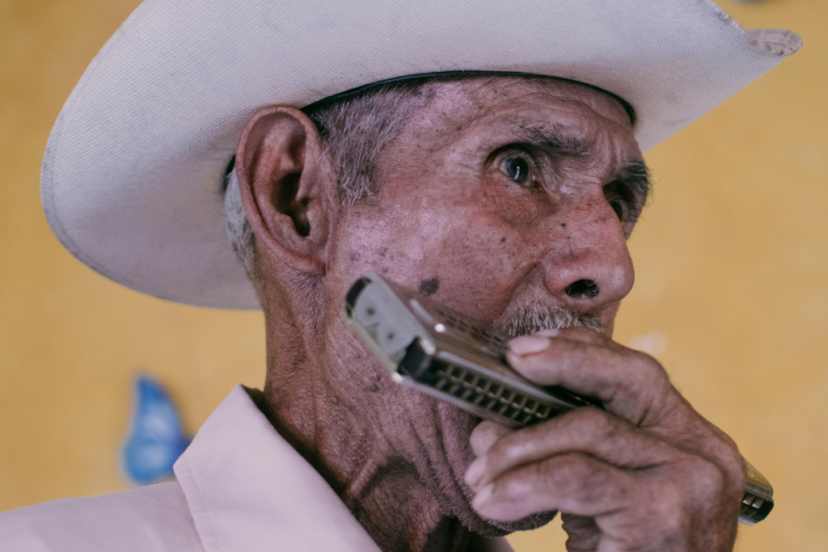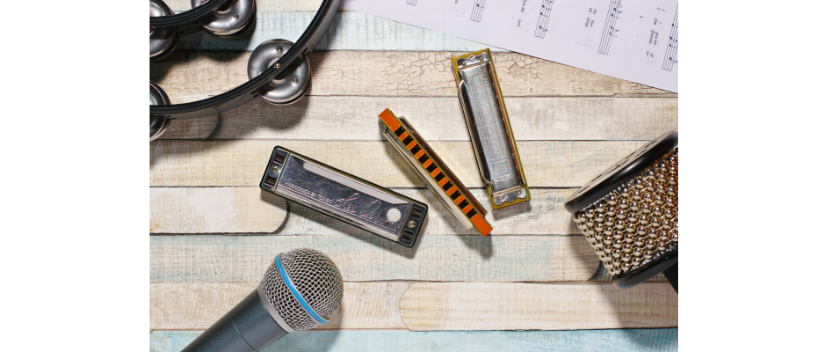When we think of the different types of violin, a classic image often comes to mind…
Types of Harmonicas: Exploring the Options

There’s a certain magic in the sound of a harmonica. From blues to pop music, this versatile musical instrument has found its way into various musical genres. But did you know there are numerous types of harmonicas? Each type possesses its unique tonal quality, lending itself to different styles of music. Let’s take a closer look at these harmonicas and delve into their enchanting world.
The Major Harmonica Types
The Diatonic Harmonica: The Blues Harp
Arguably the most popular type of harmonica is the diatonic harmonica. Often referred to as the ‘blues harp’, this diatonic instrument is favored by blues musicians for its ability to bend notes, creating that soulful, bluesy sound we all love.
The diatonic harmonica is a ten-hole instrument with a simple design. It follows the standard diatonic scale, which is the normal major scale we’re all familiar with.
Each hole on a diatonic harmonica can produce two different pitches – one when you blow and one when you draw. This is known as the Richter tuning. The notes produced by the blow reeds and draw reeds can be modified by bending, allowing seasoned harmonica players to create a more expressive sound.
The Hohner Marine Band is a renowned model of diatonic harmonicas. Another notable one is the Lee Oskar, which also offers models in natural minor scale and harmonic minor, providing a slightly flat or slightly sharp tone, perfect for playing gypsy music or any genre requiring a more exotic sound.
The Chromatic Harmonica: For the Sophisticated Player
Next on our list is the chromatic harmonica. This type of harmonica has a sliding mouthpiece that allows you to play the entire chromatic scale, including all the sharp and flat notes. This makes it an ideal choice for classical musicians and those who want to play jazz or any genre that requires more complex melodies and access to all the chromatic notes.
Chromatic harmonicas usually have a three-octave range, with each hole capable of producing the same note whether you blow or draw. The sliding mouthpiece changes the pitch by directing the air to either the upper reed plate or lower one, shifting the pitch up or down a semitone.
Unlike diatonic models, bending notes on a chromatic harmonica is less common. Instead, players often use a technique known as ‘blow and draw’, where they alternate between exhaling and inhaling to produce different notes.
The Tremolo Harmonica: Creating Waves of Sound
The tremolo harmonica is another fascinating type of harmonica. It’s designed with two reeds for each hole – a blow reed and a draw reed. They are slightly sharp and slightly flat, respectively, creating a pulsating or ‘tremolo’ effect when played together. This gives the tremolo harmonica its unique, rich tonal quality.
Tremolo harmonicas are popular in Asian music but also find their place in Western music, particularly in folk and country genres. They’re perfect for playing simple melodies and chords, adding a charming, nostalgic feel to your music.
The Chord and Bass Harmonicas: Perfect for Ensemble Playing
If you’re into ensemble playing, chord and bass harmonicas might be your instruments of choice. Chord harmonicas, as the name suggests, are designed for playing chords. A chord harmonica has multiple reed plates, allowing players to produce augmented chords, major and minor chords, and even some dissonant ones.
On the other hand, a bass harmonica produces deeper, lower-pitched notes, similar to a double bass. They usually have a two or three-octave range and are great for providing rhythmic and harmonic support in an ensemble setting.
The Octave and Horn Harmonicas: Unique Tones for Unique Sounds
Octave harmonicas have double the number of reeds as diatonic or chromatic ones, with each pair tuned an octave apart. This results in an octave harmonica having a fuller, louder sound, ideal for outdoor performances or playing with a large group.
Horn harmonicas, such as the ChengGong harmonica, are unique with their long bodies and multiple sliding mouthpieces. The horn harmonica allows players to make huge leaps in pitch quickly, creating exciting musical possibilities.
Different Harps for Different Techniques
In the harmonica world, there are two primary techniques to play notes: blow and draw. These methods refer to the action of exhaling or inhaling through the harmonica’s holes. Each hole on a harmonica is designed to produce specific notes when you blow or draw, adding layers of complexity and versatility to this compact musical instrument.
Blow Notes: Exhaling Melodies
Blow notes are produced when you exhale into the harmonica. On a standard diatonic harmonica, for example, when you blow into the holes, it vibrates the blow reeds, producing the notes of a major scale. The holes play a critical role here, with each hole corresponding to a specific note. This allows you to create simple melodies and even chords by blowing into multiple holes at once.
Draw Notes: Inhaling Rhythms
On the flip side, draw notes are created when you inhale, causing the draw reeds to vibrate. In many harmonica types, the draw notes are different from the blow notes, offering a range of pitches to play with. This dual-note system adds depth to your music, enabling you to play complex tunes with just a single harmonica.
Interestingly, the same holes can produce the same notes whether you blow or draw in some harmonicas, like chromatic harmonicas. This is due to their intricate design, featuring a sliding mouthpiece that directs the airflow to different reed plates.
In essence, the harmonica is a fascinating instrument that brings together the art of breath control, the science of acoustics, and the joy of music.

FAQs About Different Types of Harmonicas
What are the different types of harmonicas?
There are several types of harmonica, including diatonic, chromatic, chord, octave, tremolo, bass, and pitch pipe harmonicas.
What is a diatonic harmonica?
A diatonic harmonica is the most common type of harmonica, with ten holes that play the notes of a major scale when blown and drawn.
What is a chromatic harmonica?
A chromatic harmonica has a sliding button that allows the player to access all the chromatic notes in the chromatic scale. It typically has twelve reeds and a reed plate with two reeds per hole.
What is a chord harmonica?
A chord harmonica is designed to play chords rather than individual notes. It has several holes that play multiple notes simultaneously, enabling the player to produce chords.
What is an octave harmonica?
An octave harmonica has two reeds per hole tuned an octave apart, resulting in a richer and deeper sound.
What is a tremolo harmonica?
A tremolo harmonica has two reeds per hole, one slightly out of tune with the other, creating a vibrato effect. It is commonly used in folk music.
What is a bass harmonica?
A bass harmonica is larger than other harmonicas and has a deeper tone. It is typically used in classical music and can play notes as low as C1.
What is a pitch pipe harmonica?
A pitch pipe harmonica is a small harmonica used primarily for tuning other instruments.
What is cross harp?
Cross harp is a playing technique where the harmonica is turned so that the key played is different from the key of the harmonica. It is commonly used in blues and rock music.
What is Straight harp?
Straight harp is a playing technique where the harmonica is played in the key of the harmonica, rather than turning it to play in a different key. It is commonly used in folk and country music.
Summary of the Types of Harmonicas
In conclusion, the world of harmonicas is as diverse as it is fascinating. Whether you’re a blues enthusiast, a classical music lover, or a pop music fan, there’s a harmonica out there for you.
So why not pick up one of these incredible instruments and start making some beautiful music today? Who knows, you might just find your new favorite pastime!



